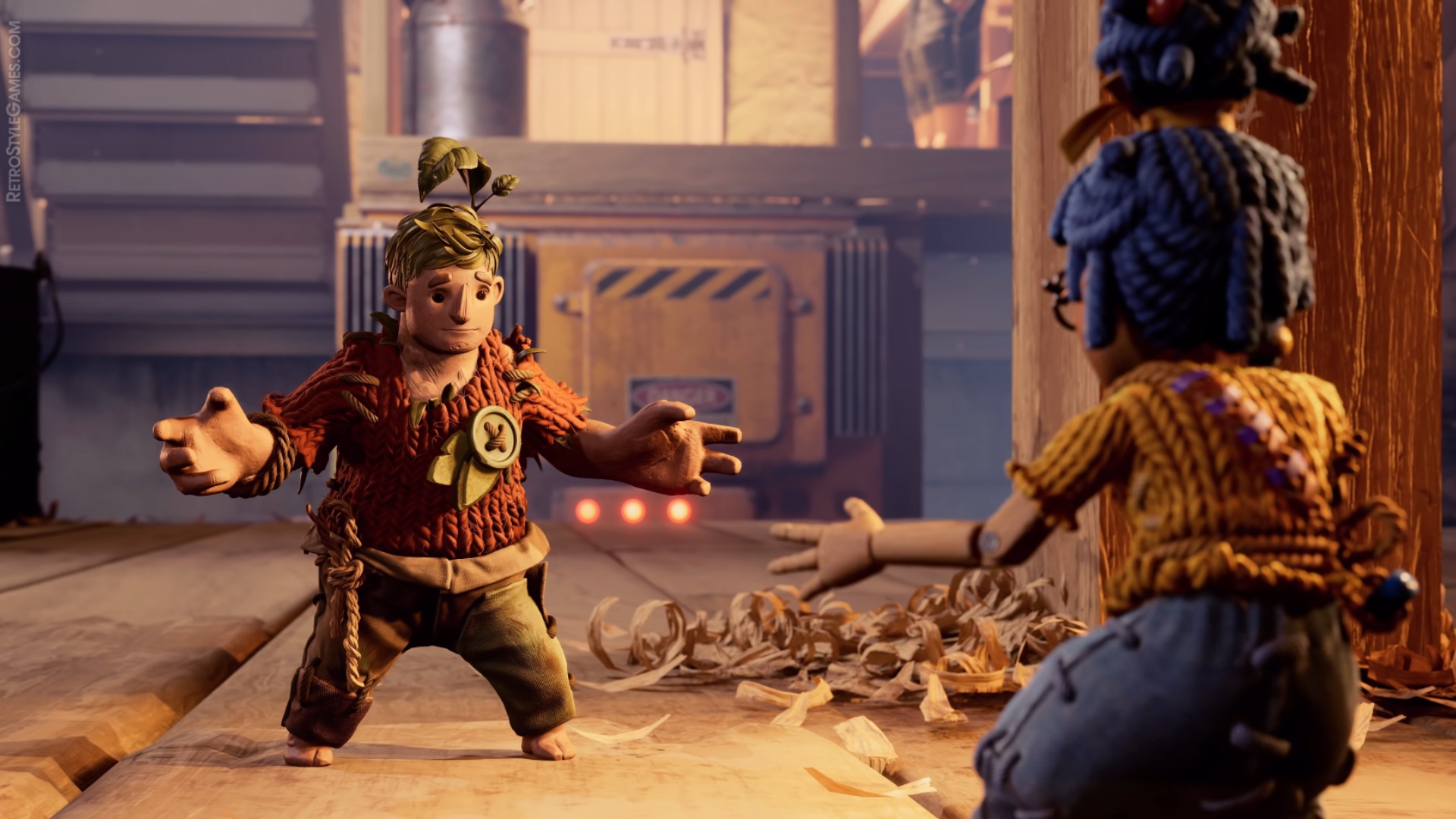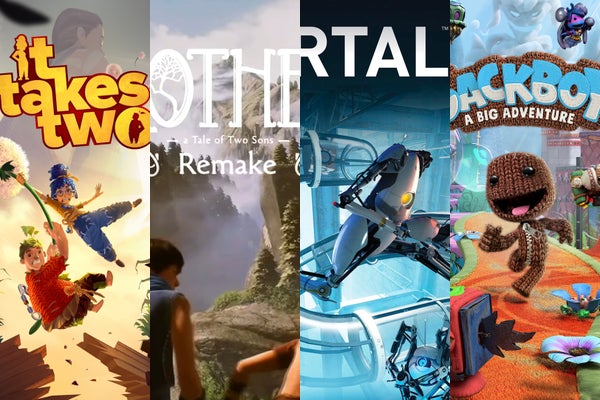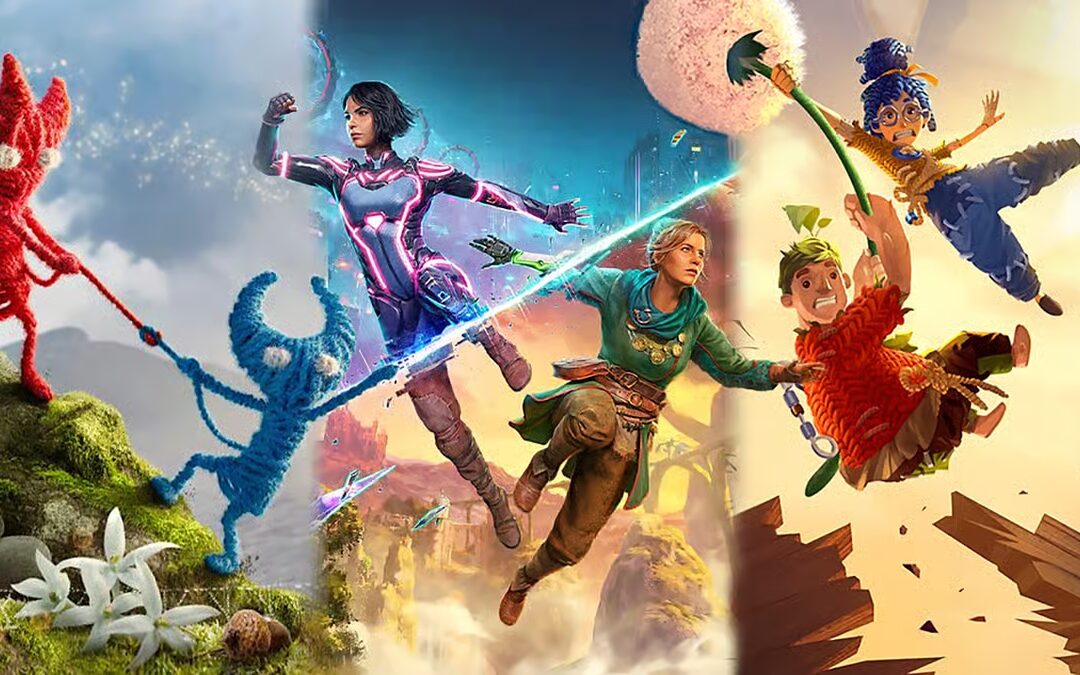When I first played It Takes Two I was blown away by how it turned teamwork into pure fun. The clever puzzles wild environments and heartfelt story made every moment unforgettable. If you’ve finished it and you’re itching for more games that capture that same magic you’re not alone.
I know how tricky it can be to find co-op adventures that really click. That’s why I’ve put together a list of games that deliver the same sense of connection and creativity. Whether you’re playing with a partner or a friend these games promise laughter challenges and plenty of memorable moments.
What Makes It Takes Two Unique

What-Makes-It-Takes-Two-Unique
“It Takes Two” stands out in cooperative games due to mandatory two-player interaction, seamless gameplay transitions, and a strong narrative that weaves through every challenge.
- Mandatory Co-Op Mechanics
I experience continuous two-player interactivity in “It Takes Two”, with core mechanics requiring both players to collaborate on every puzzle and platforming segment. Examples include synchronized switch-pulling and unique character abilities that complement each other, increasing dependency for progression.
- Dynamic Gameplay Variety
I encounter constant shifts between genres and mechanics while progressing. For instance, platforming, puzzle-solving, and action segments blend naturally, with level design introducing new gameplay rules—such as gravity reversal or split-screen manipulation—every stage.
- Emotionally Driven Storytelling
I follow an emotional story that builds depth into each character and motivates cooperation. The narrative tackles themes like relationship growth and empathy, using cinematic cutscenes and interactive dialogue to drive connection.
- Seamless Split-Screen Experience
I always see split-screen integration, both online and locally, allowing real-time visual access to my partner’s actions. This design choice fosters better coordination during complex timed challenges.
Key Features Comparison Table
| Feature | It Takes Two | Other Co-Op Games (e.g., Portal 2, Unravel Two) |
|---|---|---|
| Mandatory Two Players | Yes | Sometimes |
| Constant Mechanics Shift | Yes | Rare |
| Cinematic Storytelling | Yes | Occasionally |
| Emphasis on Relationships | High | Low–Medium |
| Seamless Split-Screen | Yes | Not always |
These elements make “It Takes Two” a standout in the co-op genre, continuously engaging players with teamwork-focused gameplay and emotionally resonant storytelling.
Top Games Like It Takes Two

Top-Games-Like-It-Takes-Two
Cooperative puzzle solving and teamwork define “It Takes Two”. I look for games offering similar interactive challenges for two players, with narrative depth or creative mechanics.
A Way Out
I find “A Way Out” features mandatory two-player co-op, just like “It Takes Two”. Players control two prison inmates, each with unique skills. I progress by working together—whether sneaking, solving environmental puzzles, or coordinating escapes. The split-screen design allows both players to act independently, creating dynamic moments.
| Game | Split-Screen | Story-Driven | Mandatory Co-Op | Genre |
|---|---|---|---|---|
| It Takes Two | Yes | Yes | Yes | Adventure |
| A Way Out | Yes | Yes | Yes | Action |
Unravel Two
I experience “Unravel Two” as a platformer focused on collaboration. Each player controls a yarn character. I face physics-based obstacles that demand synchronization—swinging, climbing, and leaping through natural settings. Storytelling stays subtle but emotional, achieved through visuals and atmosphere.
| Feature | It Takes Two | Unravel Two |
|---|---|---|
| Local Co-Op | Yes | Yes |
| Platforming Focus | Yes | Yes |
| Environmental Storytelling | Yes | Yes |
| Unique Character Abilities | Yes | Yes |
Overcooked! All You Can Eat
I play “Overcooked! All You Can Eat” for fast-paced, team-centric action. Players prepare and serve food in shifting kitchens. Success relies on communication and precise timing. I enjoy variety across kitchens, from simple diners to outlandish scenarios like lava flows or moving trucks.
| Aspect | It Takes Two | Overcooked! All You Can Eat |
|---|---|---|
| Cooperative Gameplay | Yes | Yes |
| Local & Online Multiplayer | Yes | Yes |
| Intense Coordination | Yes | Yes |
| Narrative-Driven | Yes | No |
Portal 2
“Portal 2” co-op mode provides dual-character puzzles. Each player manages portals to solve intricate spatial challenges together. I coordinate moves, timing, and logic, especially as puzzles ramp up in complexity. While its humor differs from “It Takes Two,” puzzle-solving delivers a strong sense of achievement.
| Factor | It Takes Two | Portal 2 (Co-Op) |
|---|---|---|
| Two-Player Only | Yes | Yes |
| Puzzle-Focused | Yes | Yes |
| Comedy Elements | Yes | Yes |
| Platform Availability | Multi | Multi |
Key Features to Look for in Cooperative Games
Identifying cooperative games similar to “It Takes Two” means focusing on design elements that encourage collaboration, communication, and player engagement. These core features define the experience and determine whether a game provides a comparable sense of connection.
- Mandatory Two-Player Mechanics: Top cooperative games require two players for core progression, not just offering optional multiplayer modes. Examples include “A Way Out” and “It Takes Two”.
- Diverse Gameplay Mechanics: Leading co-op titles mix platforming, puzzles, and action challenges, changing rules or abilities to keep teamwork essential. Examples are “Unravel Two” for physics puzzles and “Portal 2” for portal mechanics.
- Dynamic Split-Screen or Online Play: Selected games offer seamless split-screen or smooth online modes, letting players collaborate locally or remotely. “It Takes Two” uses split-screen, while “Overcooked!” supports both formats.
- Narrative Integration: Story-driven games use narrative to motivate collaboration and enhance immersion. “It Takes Two” and “A Way Out” blend gameplay with emotional storytelling.
- Unique Character Roles: Successful co-op games assign players distinct abilities or perspectives, making teamwork vital. In “Portal 2”, player tasks differ in puzzle-solving, and “It Takes Two” gives each character unique skills.
- Replayability and Challenge Scaling: Highly replayable games adjust difficulty or add content to support multiple sessions. “Overcooked!” and “Unravel Two” offer higher difficulty tiers for seasoned teams.
Key Cooperative Features Comparison
| Game | Two-Player Required | Unique Abilities | Narrative Focus | Split-Screen | Online Play | Difficulty Scaling |
|---|---|---|---|---|---|---|
| It Takes Two | Yes | Yes | High | Yes | Yes | Yes |
| A Way Out | Yes | Yes | High | Yes | Yes | No |
| Unravel Two | Yes | Yes | Medium | Yes | Yes | Yes |
| Portal 2 | Yes | Yes | Medium | Yes | Yes | No |
| Overcooked! All You Can Eat | No | No | Low | Yes | Yes | Yes |
Selecting cooperative games with these features ensures every session feels engaging, rewarding, and rooted in collaboration.
Tips for Enjoying Cooperative Gameplay

Tips-for-Enjoying-Cooperative-Gameplay
Effective communication improves cooperative gameplay in titles like “It Takes Two” and similar co-op games. I clarify intentions before moving, describe actions aloud, and use short cues for precision. In games like “A Way Out” or “Overcooked! All You Can Eat,” I coordinate puzzle-solving, timing, and movement for success.
Adaptability keeps sessions engaging. I adjust strategies when puzzles get difficult, and I swap roles with my partner if we’re stuck to take advantage of diverse skills.
Patience creates a positive atmosphere in co-op sessions. I give my partner time to experiment, encourage mistakes as learning opportunities, and avoid rushing through multi-step objectives. This makes complex levels in “Portal 2” or “Unravel Two” less frustrating.
Consistent collaboration increases enjoyment and strengthens the partnership. I celebrate small achievements, provide positive feedback, and discuss team strategies between levels.
Adjusting game settings can optimize accessibility and comfort. I modify camera sensitivity, enable subtitles, or increase in-game hints for challenging sections if a game offers these features.
Cooperative Gameplay Success Factors Table
| Success Factor | Description | Example Game |
|---|---|---|
| Communication | Verbal cues, action planning | It Takes Two |
| Adaptability | Role swapping, flexible strategies | A Way Out |
| Patience | Allowing time to learn, encouraging retries | Portal 2 |
| Collaboration | Team celebrations, shared strategies | Overcooked! All You Can Eat |
| Accessibility | Adjusting settings for comfort | Unravel Two |
Conclusion
Finding games that capture the same cooperative magic as “It Takes Two” has truly deepened my appreciation for teamwork in gaming. Whether I’m solving puzzles or navigating wild challenges with a friend these experiences always bring a fresh sense of connection and fun.
Exploring different co-op titles has shown me how creativity and collaboration can turn any gaming session into something memorable. If you’re looking for your next great adventure these games are sure to keep you and your partner engaged every step of the way.
Frequently Asked Questions
What makes “It Takes Two” unique among co-op games?
“It Takes Two” stands out due to its mandatory two-player design, seamless split-screen experience, diverse gameplay mechanics, and emotionally engaging story. Players must communicate and collaborate to solve puzzles and progress through the game’s evolving challenges, making teamwork essential throughout.
Are there other games similar to “It Takes Two” for cooperative play?
Yes, games like “A Way Out,” “Unravel Two,” “Overcooked! All You Can Eat,” and “Portal 2” offer cooperative gameplay with a focus on puzzle-solving, teamwork, and split-screen or online play. Each provides unique mechanics and collaborative challenges.
Does “It Takes Two” offer both local and online co-op?
Yes, “It Takes Two” supports both local (couch) and online co-op modes. Players can team up on the same console or over the internet, providing flexible options for playing together with a partner.
Why is communication important in co-op games like “It Takes Two”?
Effective communication is crucial in co-op games as it helps coordinate actions, share strategies, and solve puzzles efficiently. Clear communication leads to better teamwork, making the gameplay experience smoother and more enjoyable.
What are the key features to look for in a good co-op game?
Look for mandatory or strong co-op mechanics, diverse and interactive gameplay, dynamic split-screen or online play, deep narrative integration, distinct player roles, and high replayability with scalable challenges.
How do you maximize enjoyment in co-op games?
Maximize enjoyment by communicating clearly, being patient and adaptable, celebrating shared achievements, and adjusting settings for comfort and accessibility. Discuss strategies and work together to overcome difficult sections.
Can you play “It Takes Two” solo?
No, “It Takes Two” requires two players to play, either locally or online. The game is designed specifically for cooperative play and cannot be completed alone.
How do the co-op elements in “It Takes Two” compare to other games?
“It Takes Two” emphasizes teamwork, interactivity, and narrative more deeply than many co-op games. Each level introduces new mechanics, ensuring both players must collaborate closely, making it distinct from more traditional or less-interactive co-op titles.

